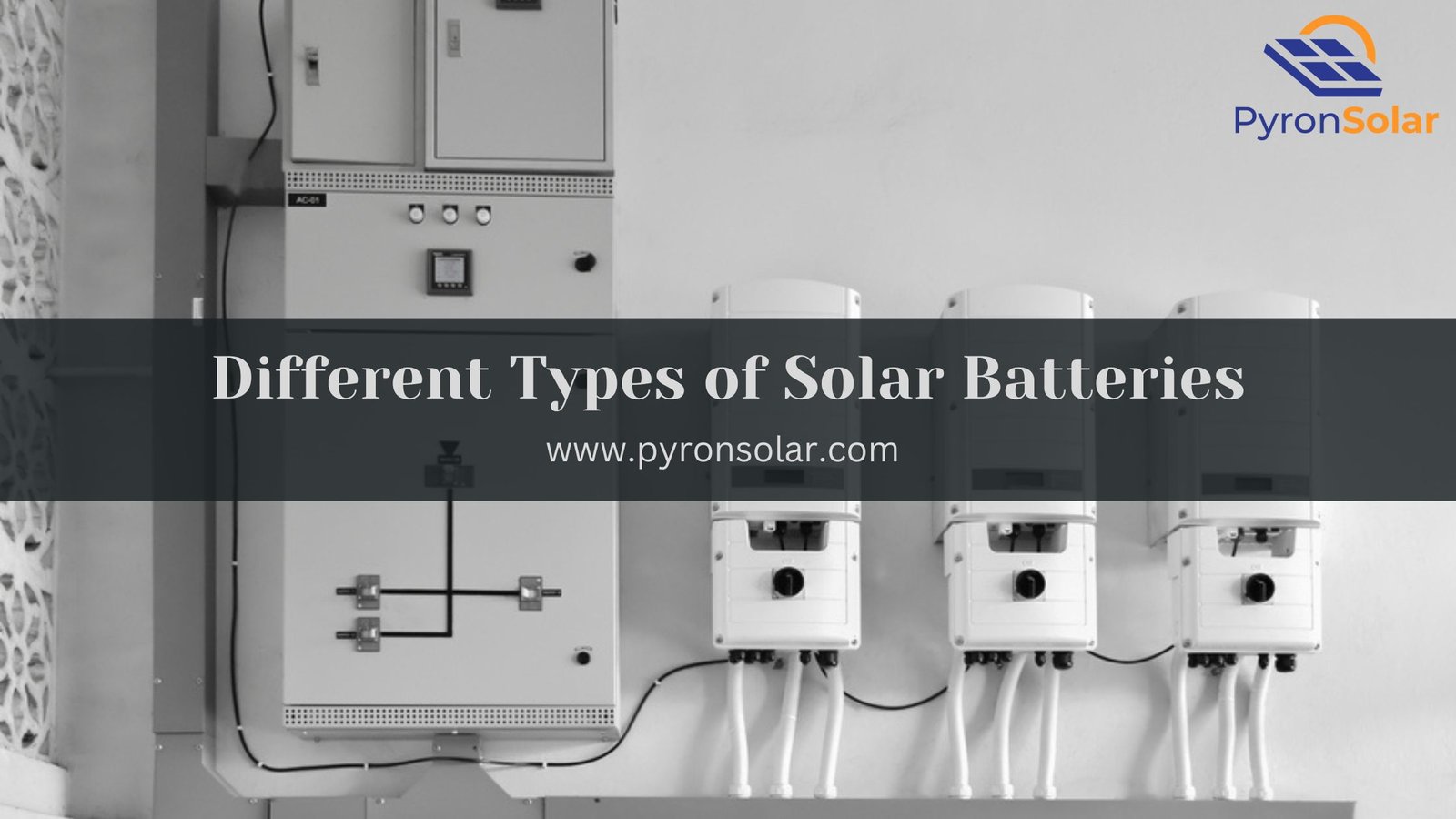Solar batteries are solar energy storing devices and essential components of the solar power system that greatly improve solar power utilization by storing extra energy for later use or during an emergency.
Having an influential role in solar power systems, the solar batteries store excess solar energy which can be used during low solar generation or power outages.
The reason to use solar batteries is to increase solar energy self-consumption, have sufficient power backup during outages, and most importantly reduce or cut off electricity costs.
Before analyzing which solar battery is right for homeowners, it is equally important to be aware of different types of solar batteries. And, not just that, but also distinguishing solar batteries based on their chemical composition like lithium-ion, lead-acid, nickel-cadmium, flow batteries, and saltwater batteries. In addition to that, distinguishing batteries based on current Type such as DC coupled and AC coupled solar batteries. Also, let us discuss backup vs consumption-only batteries.
Types of Solar Batteries
Determining the type of solar batteries is based on the following 3 main features:
Chemical Composition: The chemical composition of solar batteries keeps varying where the lithium-ion batteries (Li-ion) are most used for solar energy storage because of their best efficiency. Next is Li-ion, followed by Lithium iron phosphate (LFP/LifePO4) batteries, which are considered the best type for solar power systems. And then comes the nickel-cobalt-manganese (NCM) and traditional Li-ion batteries (LCO).
Current type (AC vs DC Coupling): Solar batteries can be AC-coupled or DC-coupled.
AC-coupled batteries come with their inverter and can be charged using regular AC circuits or already converted solar power, but they are less efficient due to multiple DC to AC conversions.
DC-coupled batteries are directly connected to the solar panels and are more efficient, but may require additional equipment.
Capabilities (Backup vs Consumption-only): Solar batteries can have backup capabilities, providing power during outages, or consumption-only capabilities, focusing on maximizing self-consumption of solar energy. The choice depends on whether the primary goal is backup power or increased self-consumption of solar energy.
Distinguishing Batteries Based on Their Chemical Composition
There are 5 major types of solar batteries which depend on the chemical composition the Lithium-ion, Lead-acid, Nickel-cadmium, Flow Batteries, and Salt Water batteries. Each type of battery has its distinctive characteristics and is ideally suited for different applications in solar energy storage.
Lithium-ion Batteries
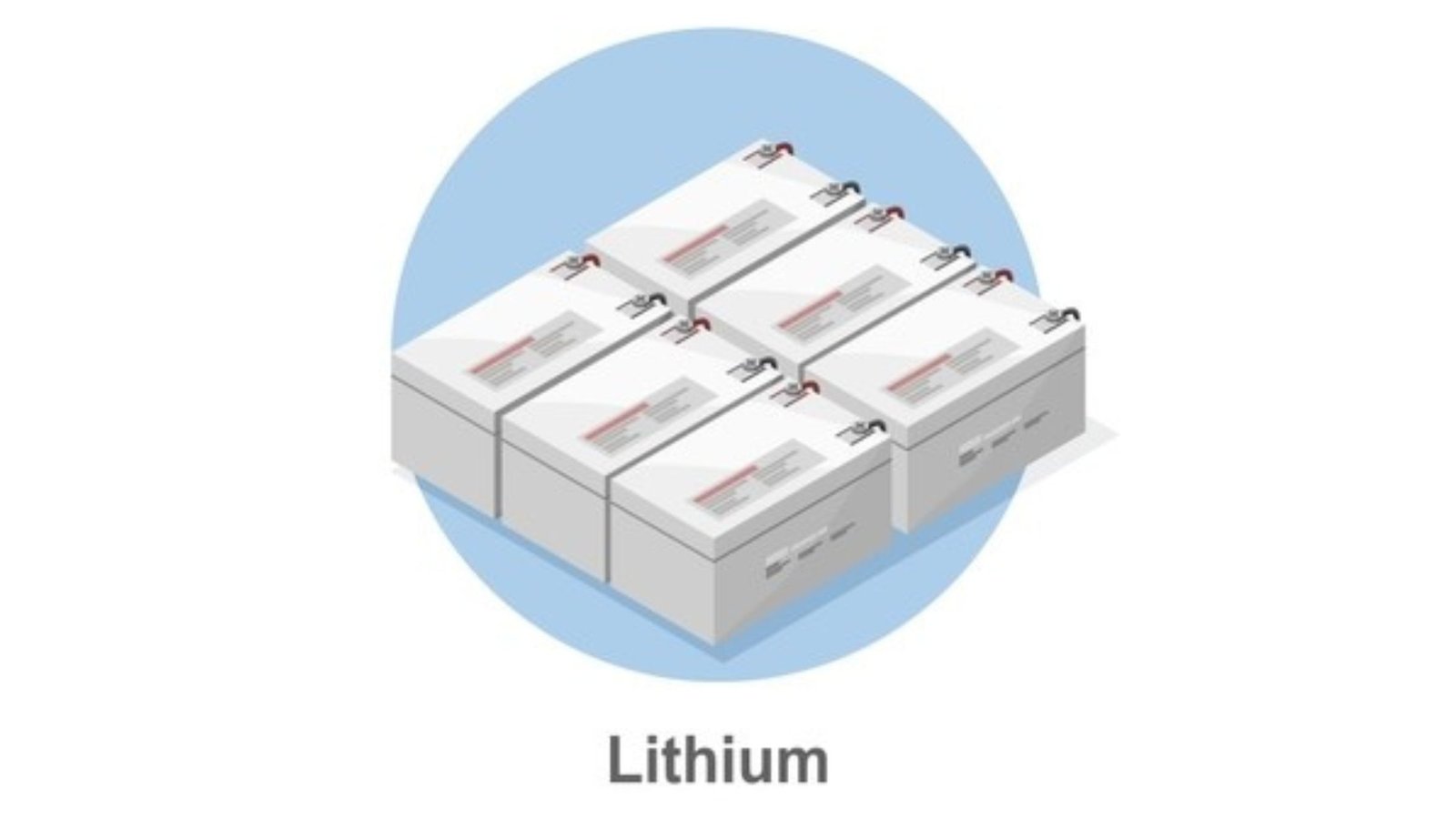
Over the years, Lithium-ion batteries have certainly benefited from the huge improvement in their characteristics. Ever since Lithium-ion was introduced to the market in 1991, the batteries have undergone an increase in their volumetric energy density.
With an oxide layer on the negative electrode, these batteries consist of carbon compounds on the positive electrode, and because of this they deliver higher efficiency and great battery life, but their high cost could be a drawback.
The longevity of Lithium-ion batteries is impacted by environmental conditions like very high temperatures. Generally, these Lithium-ion batteries are increasingly being utilized in portable devices, hybrid electric vehicles, and normal electric vehicles. And, despite their expensive price tag, these batteries are mostly considered for usage in large-scale storage systems.
Advantages:
- High efficiency.
- Good battery life.
- Consistent voltage even if the charge degrades.
Disadvantages:
- Expensive Production.
- Environmental concerns about mining materials like Cobalt and Nickel.
There are technological differences and environmental impacts as nowadays electric cars are primarily influenced by the lithium-ion battery productions. Recycling such batteries is also very important and accordingly, efforts are being put to develop ways to reuse waste.
You can choose the best type of lithium-ion battery by considering its longer lifespan, low maintenance requirements, and initial cost (although they are higher). Also, these batteries are the most suitable for residential solar batteries because of their minimum maintenance and longevity.
Lead-acid Batteries
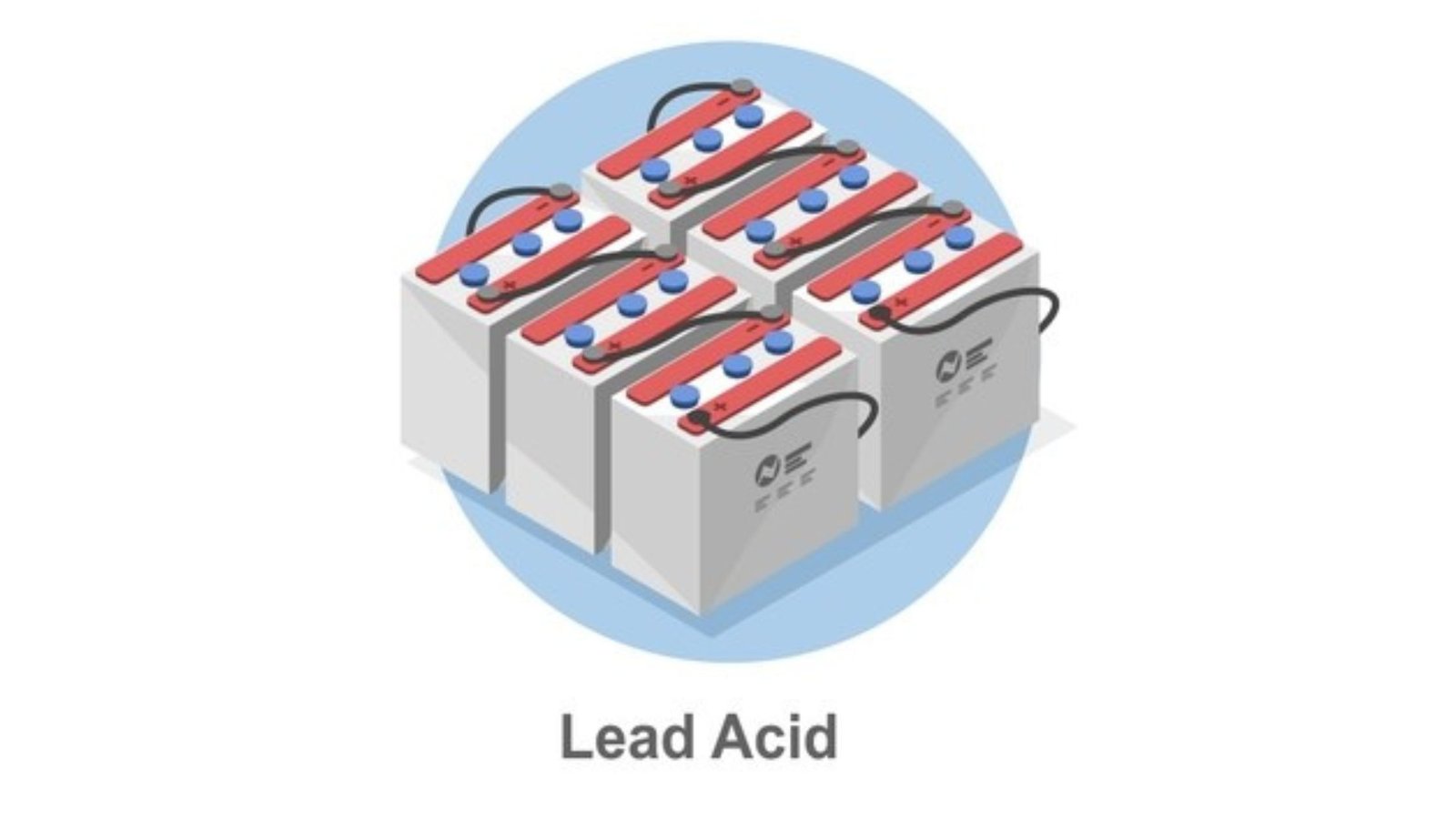
When it comes to low cost, Lead-acid batteries are the ones that are considered and widely used in different applications. Still, they have a short-range lifespan compared to other battery types and are less efficient. You should also know about average lifespan of solar batteries. It will help you to decide which type of battery would be better for you.
Advantages:
- Low cost per watt-hour.
- High power density enables them to deliver high currents.
- Reduced Self-Discharge.
- Long service life.
- Durability, Reliability, and minimum maintenance requirements.
- Most efficient and long-established recycling processes.
Disadvantages:
- Shorter lifespan.
- Lower efficiency compared to other battery types.
- Low Energy Density can limit their suitability for certain applications.
- Too Heavy for the amount of electrical energy they are capable of supplying makes them unsuitable for applications.
- The presence of Lead and sulfuric acid content poses environmental concerns due to their toxicity.
- Very prone to prolonged cycling when compared to other batteries.
- Faces competition from alternative battery technologies.
These Lead-acid batteries have been continuing as the traditional choice because of their lower cost. However, when it comes to analyzing their technological differences and environmental impacts, it becomes a matter to be concerned about because of the lead content present in it and requires the right way of proper disposal and recycling.
If you are looking to choose the best type of solar battery for commercial-scale projects, then considering lead-acid batteries would be the best cost-effective solution.
Nickel-cadmium Batteries
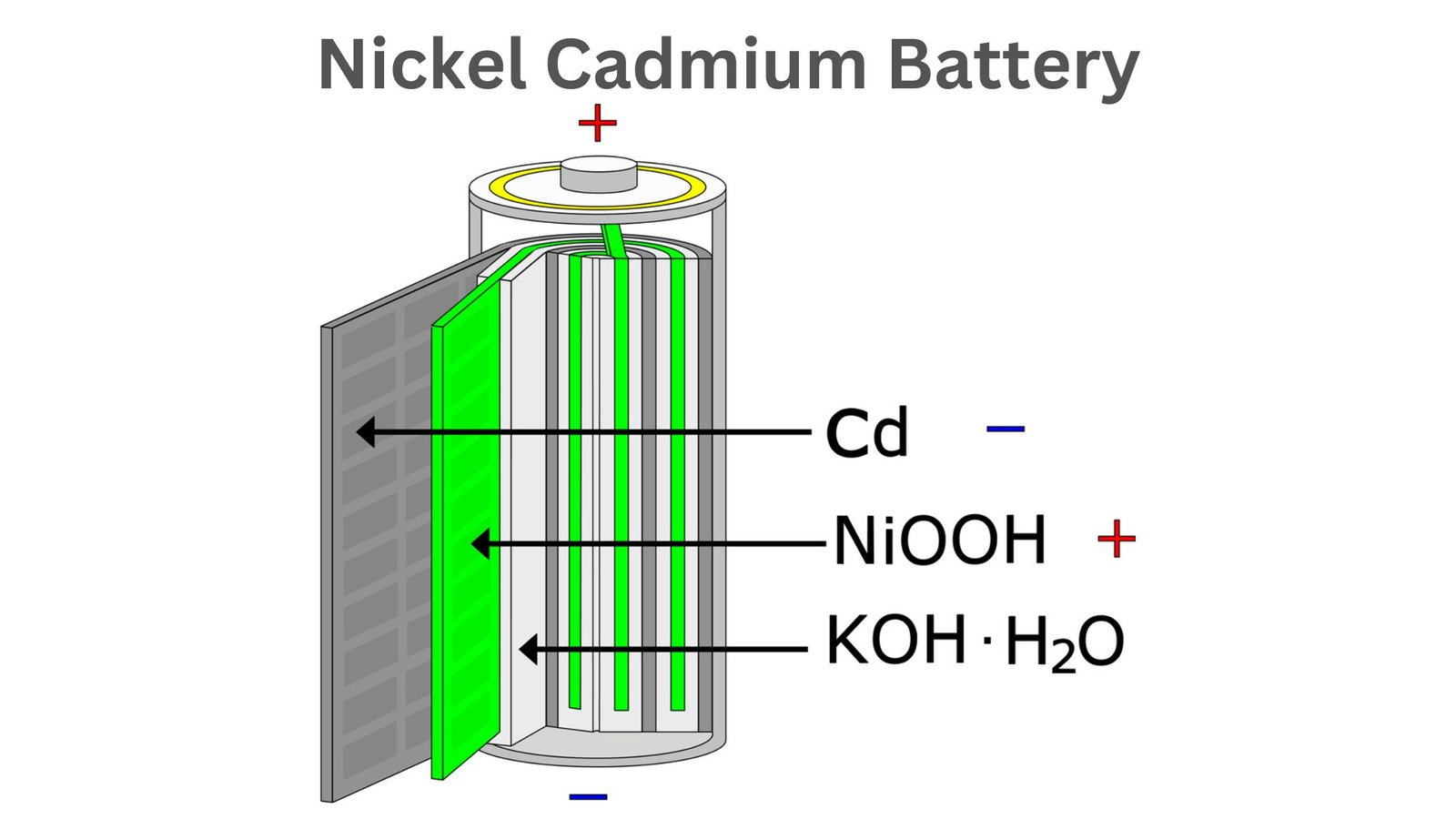
Operating at extreme temperatures is what makes Nickel-cadmium batteries sustainable in the market and also requires less complex battery management systems.
Advantages:
- Capability to function at extremely high temperatures.
- More amount of energy storage in a compact size.
- Long cycle life (sustains capacity for 1000 cycles if properly maintained).
- Fast Charging Capability enhances productivity.
- Delivers consistent power and withstands many charge and discharge cycles.
Disadvantages:
- Voltage depression or memory effect.
- Environmental concerns due to cadmium content.
- Availability of more advanced and compact alternatives.
- 3 to 4 times more expensive compared to lead-acid batteries for the same capacity.
That is the reason these Nickel-cadmium batteries are less popular compared to other battery types in the market.
However, the presence of cadmium content, raises concerns about the technological differences and environmental impacts of the Nickel-cadmium batteries, as they need proper disposal and recycling.
If you want to choose the best type of battery that is capable of resisting and operating at extreme temperatures for your commercial-scale projects, then you might consider nickel-cadmium batteries.
Flow Batteries
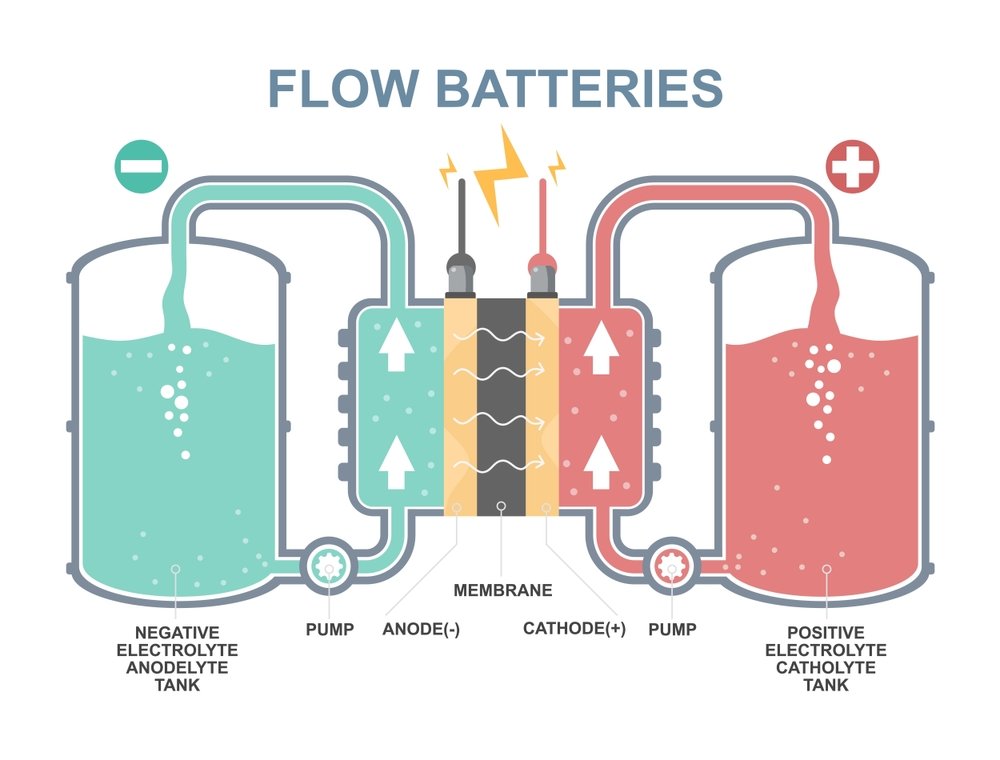
Known for their larger size and higher cost, Flow batteries are the ones that are most suitable for large-scale battery storage applications.
Advantages:
- Suitable for large-scale applications.
- Flexible in meeting specific power and energy requirements
- Long service life.
- Increased safety and extended hours of operation.
- Modular and flexible system design.
- Cost reduction in the last 10 years has made flow batteries economically feasible.
Disadvantages:
- Their larger size.
- High cost.
- Consists of expensive fluids that are also corrosive and toxic.
- Faces tough competition against defendable market leader (lithium-ion batteries).
- Reduced decoupled energy and power in hybrid flow batteries harm their overall performance.
Flow batteries have environmental impacts that are related to raw material extraction, energy consumption during production, and end-of-life disposal or recycling processes.
Whereas, the technological difference of the Flow batteries primarily includes safety as they do not contain flammable materials, such as vanadium, and are environmentally friendly which makes them safer than Lithium-ion batteries. But these batteries deliver slightly less power in a smaller and lighter package compared to the lithium-ion batteries.
In choosing the best type of solar battery for large-scale battery storage applications, flow batteries can be considered as the safer environment-friendly option.
Saltwater Batteries
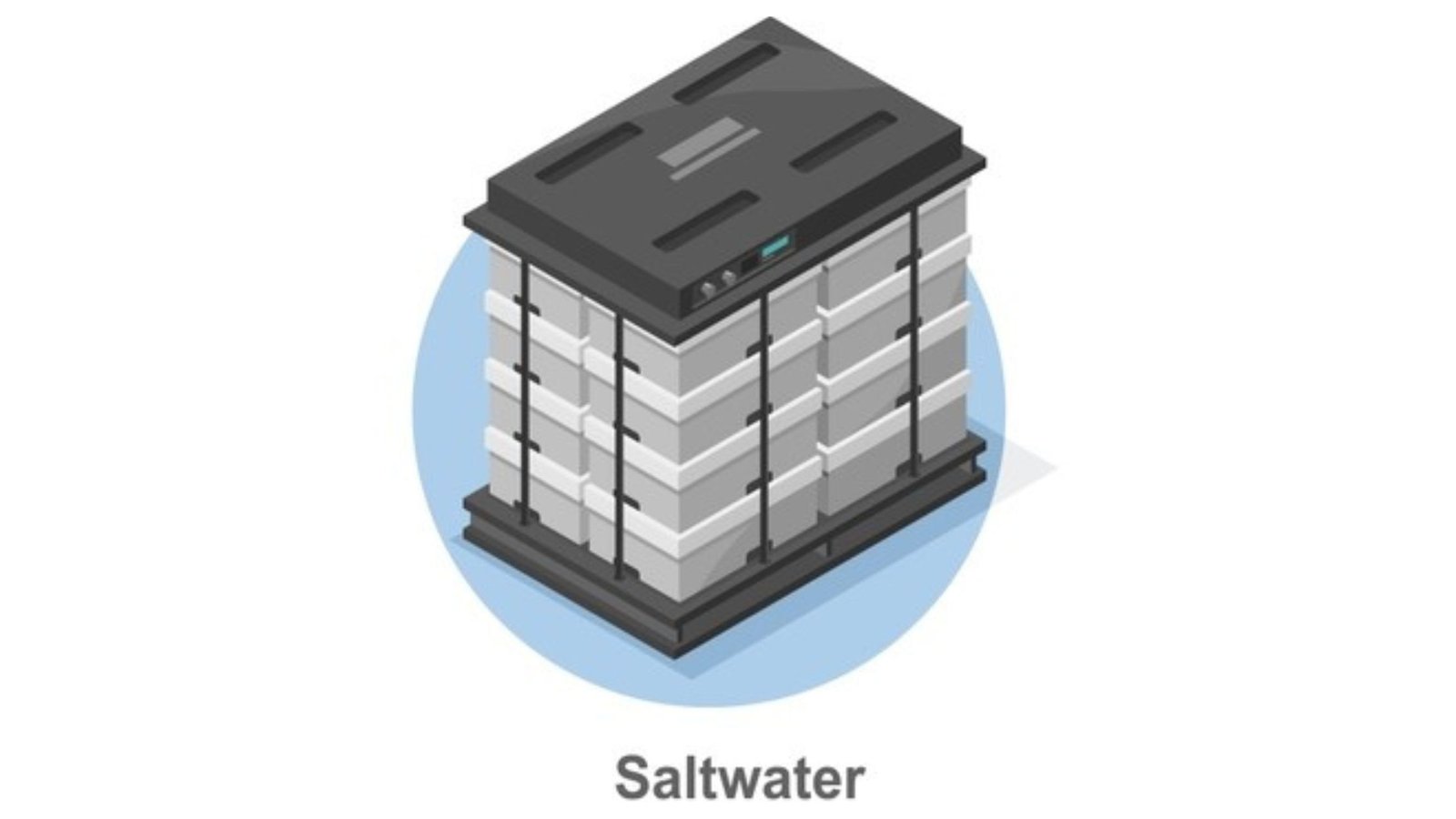
When it comes to considering the longer lifespan, these Saltwater batteries are the one, and they have minimal maintenance requirements, which makes them most suitable for various applications.
Advantages:
- Long lifespan.
- Not prone to fire-related accidents.
- Does not contain harmful materials
- Easier to recycle.
- More quantity of sodium is naturally available.
- Minimum maintenance requirements.
- Materials readily available.
Disadvantages:
- Large size becomes a limiting factor for certain applications.
- Limitations based on energy storage requirements.
- Expensive to manufacture.
- Saltwater batteries in the market are uncertain.
- Ongoing challenges related to scaling production.
- Technological limitations to be addressed.
Saltwater batteries are environment friendly which makes them the most suitable option for specific applications.
You can consider choosing saltwater batteries for their long lifespan and minimum maintenance requirements, which are especially clear regarding residential and commercial applications.
Distinguishing Batteries Based on The Current Type
When it comes to distinguishing between DC-coupled batteries and AC-coupled batteries, you need to understand the electrical connection between solar panels and the battery system. Because, several major differences impact their efficiency, compatibility, and overall performance.
DC Coupled Batteries
Here are the few pros and cons of DC-coupled batteries in a solar system.
Pros:
- Higher round-trip efficiency is up to 98% compared to AC-coupled systems which range from 90% to 94%.
- Reduced equipment cost and power losses.
- Fewer DC/AC conversions.
- Simpler signal flow.
- Best and Efficient option for smaller systems (RVs, caravans, and smaller-scale residential off-grid systems).
- Expandability and flexibility.
Cons:
- Very Complicated installation process.
- High upfront installation costs.
- Compatibility limitations (cannot be added directly to existing PV systems with traditional inverters).
- Requires an upgrade to a compatible hybrid unit or separate charge controller.
- Challenging to fit DC-coupled batteries into existing systems (no easy installation and steady growth).
The DC coupling method affects the overall performance of a solar energy system in many ways such as:
- Using the same inverter for both the solar panels and the battery module.
- Attains higher round-trip efficiency
- Reduced power losses.
- Fewer conversions and simple signal flow.
Hence, this results in improved efficiency for smaller systems and makes it much more expandable and flexible for powering DC appliances and loads.
DC Coupling Method might be preferred over AC Coupling Method in the following scenarios:
- While installing solar panels and a battery storage system simultaneously, a DC-coupled system may be preferred because of its higher overall efficiency compared to AC-coupled setups.
- For small mobile systems used in Recreational vehicles, caravans, and smaller residential off-grid systems, the DC-coupling method using solar charge controllers is considered the best option.
- In small off-grid systems and solar panel setups, the DC coupling method is preferred due to its simplicity, fewer conversions, and straightforward signal flow which are the first and foremost priority.
AC Coupled Batteries
Here are the few pros and cons of AC-coupled batteries in a solar system.
Pros:
- AC-coupled batteries are easier to install on an existing solar panel system compared to DC-coupled batteries.
- More AC-coupled batteries can be added to expand their capacity and make them suitable for retrofitting into existing systems.
- Highly compatible with different solar technologies compared to DC-coupled batteries.
- Greater flexibility in system design and integration.
- Convenient for both initial installations and expansions.
- No central point of failure and enhances the reliability of the system.
- More efficient for grid-tie energy storage systems.
- Suitable for larger-scale off-grid systems when daytime loads are high.
Cons:
- AC-coupled systems have lower round-trip efficiency in charging batteries which is 90% to 94% whereas DC-coupled systems have achieved 98%.
- The complex process of retrofitting AC-coupled batteries into existing systems is very challenging compared to DC-coupled batteries.
- Retrofitting impacts upfront installation costs.
The AC coupling method affects the overall performance of a solar energy system in many ways such as:
- Ensuring the convenience of retrofitting.
- Compatibility when using different solar technologies.
- Quick, easy, and straightforward installation.
- Suitable when daytime loads are high.
AC Coupling Method might be preferred over DC Coupling Method in the following scenarios:
- Easier installation of existing solar panel systems.
- Steady growth which makes them a preferred choice for retrofitting.
- Design and integration are prioritized and offer flexibility.
Backup vs Consumption Only Battery
California’s NEM 3.0 policy had a serious impact and influenced the development of consumption-only batteries, especially concerning solar energy usage and storage. Here is a detailed explanation of that particular impact:
1. The shift in Rate Structure and Solar Value:
- The NEM 3.0 policy brought the Shift in Rate Structure which reduces solar value. A major reason behind the NEM 3.0 policy was to push for pairing solar with battery storage.
- The issue was not about generating solar electricity in California, whereas the problem was regarding storing and using it.
2. Encouragement for Battery Investment:
- According to the old regulation NEM 2.0, homeowners in California were allowed to cover 90% of their electricity bill with the help of a system to subsidize 100% of their consumption.
- Whereas, NEM 3.0 brings the regulation of lower compensation for customers who do not install battery storage along with their solar.
3. Faster Payback Period for Solar-Plus-Storage:
- Under the NEM 3.0, now there is a faster payback period for a solar-plus-storage installation compared to a solar-only installation.
- The NEM 3.0 policy encourages opting for the combination of solar systems along with battery storage, which makes it economically viable.
4. Maximizing Savings Value:
- Under the NEM 3.0, it maximizes savings value by consuming the solar immediately Instead of exporting it to the grid.
- The primary focus is to pair solar with battery storage.
- Optimize energy usage and savings.
5. Grid Resiliency and Independence:
- With the new hourly export rates, during the day solar battery users will be able to store the panel-produced electricity and export it to the grid during the evening while rates are high.
- It helps with grid resilience and also provides solar users the opportunity to increase their net metering potential.
Backup Batteries
Functioning by storing the electrical energy, these Backup batteries can be used to provide electricity to a home’s must-have appliances and devices when the grid is down. Hence, we can use the stored energy during power outages or at night when solar panels are not producing the necessary electricity.
For homeowners having solar panels, pairing them with a battery backup system will provide renewable long-term resilience during unexpected scenarios like power outages due to storms, equipment failures, or grid shutdowns. Then these backup batteries ensure that devices and appliances stay powered.
| PROS of Backup Batteries | CONS of Backup Batteries |
| Provides uninterrupted power during outages. | Can add as much as 25% in residential costs. Also, produces 7-10% less energy compared to the Grid-Tie option. |
| Guaranteeing that essential devices stay electrically powered. | Limited usage to connect PV panels directly—typically used only for water pumping |
| Can be paired with solar panels for renewable energy efficiency. |
Backup Batteries operation During Grid Outages and Implications for Homeowners
During unexpected grid outages, Backup batteries are the solution for homeowners such that they are independent of the utility grid. Also, they avoid other inconveniences related to outages without having to sacrifice their daily routines.
This can be very beneficial, especially during the PSPS (Planned Safety Power Shutoffs) or any unexpected power outages. On top of that, backup batteries are capable of powering important and necessary house appliances for hours. Also, it is capable of keeping powered for few days, which completely depends on the capacity and load of the running device.
Why are Backup Batteries better for Homeowners?
Backup batteries are better for homeowners as they are capable of providing a reliable source of power during grid outages and protect from power disruptions. Ultimately, the Backup batteries will give the homeowners peace of mind.
Consumption Only Batteries
Also known as “Self-consumption” batteries, Consumption-only batteries are energy storage systems that are specifically developed for storing solar-generated excess energy for later use within the same property. Generally, the consumption of batteries is used more in residential settings to increase the self-consumption of renewable energy and decrease dependence on the grid.
Whenever the generation of renewable energy exceeds the demanded requirement, then those excess energies are stored in batteries for later usage. Hence, this method allows homeowners to make the most of their energy usage by not relying much on the grid usage.
| PROS of Consumption-Only Batteries | CONS of Consumption-Only Batteries |
| Supports the self-consumption of renewable energy. | Expensive Initial cost of installation and equipment. |
| Reduces dependency and reliance on the grid. | Comes with a limited energy storage capacity. |
| Decreases your energy bills. | Cost of Maintenance and replacement if any. |
| Environment-friendly benefits. | Limited capability of powering high-energy appliances during grid outages. |
Consumption Only Batteries operation During Grid Outages and Implications for Homeowners
During unpredictable grid outages, consumption-only batteries become the best solution that powers up the necessary important home appliances. The duration of backup depends on the battery capacity and energy requirements of the homeowner.
However, one must note that the powering ability during outages might be limited because of the battery capacity. So, it is the responsibility of the homeowners to carefully monitor their energy demands and requirements while depending on batteries during power outages.
Also, remember that consumption-only batteries can only provide energy independence during outages but might not be able to maintain the same power supply levels as the grid under a few circumstances.
Why are Consumption Only Batteries better for homeowners?
Consumption-only batteries are better for homeowners because of the following reasons:
- Energy Independence.
- Grid Outage Support.
- Environmental Benefits.
- Lower Energy Bills.
- Long-Term Investment.
Which Battery is Right For Homeowners?
While homeowners are looking for the best type of batteries, they need to consider a few influential factors such as reliability, cost-effectiveness, and safety.
According to the market survey, lithium-ion (Li-ion) battery stands out as the strongest preferred option for homeowners because of its safety, reliable operation, and energy density. Also, the Li-ion battery is well recognized for its stability during charging and discharging which makes it the safest option for residential usage. On top of that, it has a good balance between energy density, longevity, and price which makes it the most reliable solution within a reasonable budget.
One of the main reasons for the popularity of these Li-ion batteries is their safety features and lower cost compared to other advanced technology batteries. It provides a stable and efficient energy storage solution, making it well-suited for homeowners seeking a reliable and cost-effective battery option.
The best budget-friendly battery option for homeowners would be the lead-acid battery which is well known for its reliability and affordability. At the same time, you need to make a note that these lead-acid batteries might not be capable of offering the same energy density as lithium-ion batteries.
Overall, the lithium-ion (Li-ion) battery stands out to be the most reliable, efficient, and environment-friendly option for homeowners that maintains a good balance between safety, energy density, and cost-effectiveness.
However, for those who are seeking a budget-friendly option, the lead-acid battery would be the best practical choice that offers reliability at a reasonably low cost. Here is more detailed information about how to pick the right solar battery for your solar system.
Ray is an avid reader and writer with over 25 years of experience serving various domestic and multinational private and public energy companies in the USA.

